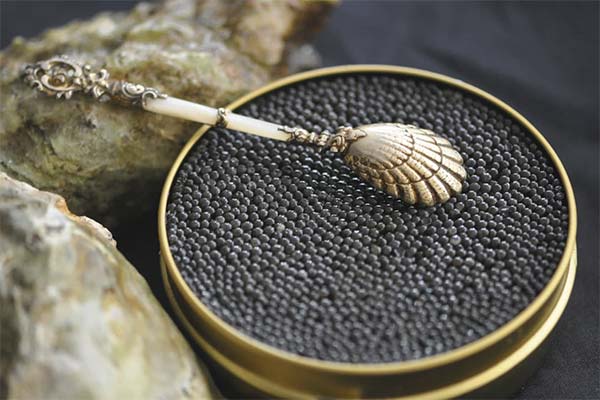The Caspian Sea is home to some of the most prized caviar in the world. Known for producing the finest fish roe, this region has set the gold standard in the luxury food industry for centuries. Whether you’re a seasoned caviar enthusiast or just beginning your journey into gourmet delicacies, understanding the kinds of Caspian Sea caviar is essential. From Beluga to Osetra and Sevruga, each type offers a unique taste, texture, and experience.
In this comprehensive guide, we’ll explore the main varieties of caviar from the Caspian Sea, highlighting their origins, characteristics, and culinary uses.
Why the Caspian Sea?
The Caspian Sea, bordered by Iran, Russia, Kazakhstan, Turkmenistan, and Azerbaijan, provides the perfect habitat for several sturgeon species. Its unique ecosystem, rich in minerals and nutrients, allows sturgeon to thrive, resulting in premium-quality roe with unmatched flavor and texture.
For generations, Caspian Sea caviar has been celebrated as a symbol of elegance and refined taste, served in royal courts, Michelin-starred restaurants, and luxury events around the globe.
1. Beluga Caviar (Huso huso) – The King of Caviar
Beluga caviar is the most famous and expensive variety from the Caspian Sea. It comes from the Beluga sturgeon, the largest and rarest of all sturgeon species.
Key Features:
- Egg size: Very large, up to 4 mm in diameter
- Color: Ranges from light gray to silver or black
- Flavor: Rich, creamy, and buttery with a delicate finish
- Maturity: Beluga sturgeon can take up to 20 years to produce roe
Due to its rarity and exceptional quality, Beluga caviar is often reserved for the most discerning palates. It is typically served simply—on toast points or blinis—to allow its pure flavor to shine.

2. Osetra Caviar (Acipenser gueldenstaedtii) – A Nutty Elegance
Osetra caviar is the second most sought-after variety and comes from the Osetra sturgeon, a medium-sized species native to the Caspian Sea.
Key Features:
- Egg size: Medium to large
- Color: Golden, brown, or olive green
- Flavor: Nutty, slightly briny, and complex
- Maturity: Takes around 10–12 years to mature
Osetra caviar is known for its luxurious texture and depth of flavor. Some rare golden Osetra varieties are almost as expensive as Beluga. It pairs beautifully with champagne, dry white wine, or vodka.
Best Place to Buy Caviar in Germany: Discover SB Caviar
When it comes to finding the best place to buy caviar in Germany, one name stands out for quality, authenticity, and luxury: SB Caviar. Known for its exceptional selection of premium-grade caviar sourced from trusted farms, SB Caviar offers a refined gourmet experience for true connoisseurs.
3. Sevruga Caviar (Acipenser stellatus) – The Delicate Choice
Sevruga caviar is harvested from the Sevruga sturgeon, one of the smaller and faster-maturing sturgeon species in the Caspian Sea.
Key Features:
- Egg size: Small
- Color: Light to dark gray
- Flavor: Bold, briny, and intense with a crisp texture
- Maturity: Matures in 7–10 years
Sevruga is more abundant than Beluga and Osetra, making it a popular choice for caviar lovers who appreciate a sharper taste at a lower price point. Its fine grains and bold character make it ideal for use in high-end hors d’oeuvres.
4. Bester Caviar – A Hybrid Innovation
Bester caviar is a hybrid variety, resulting from the crossbreeding of Beluga and Sterlet sturgeon. This innovative approach to aquaculture has allowed producers to create a high-quality caviar that matures faster than pure Beluga.
Key Features:
- Egg size: Medium
- Color: Dark gray to black
- Flavor: Smooth and slightly sweet with a rich finish
- Maturity: 6–8 years
Bester is gaining popularity in luxury markets due to its consistency, affordability, and refined flavor profile.
5. Kaluga Caviar (Huso dauricus) – A Caspian-Like Experience from Amur
Though not native to the Caspian Sea, Kaluga caviar is often included in comparisons because it offers a similar experience to Beluga. Kaluga sturgeon is a cousin of the Beluga, farmed mainly in the Amur River Basin but increasingly replicated in Caspian aquaculture farms.
Key Features:
- Egg size: Large
- Color: Dark gray to golden brown
- Flavor: Mild, buttery, and smooth
Kaluga is a sustainable alternative that satisfies the luxury market’s growing demand while easing pressure on endangered Caspian sturgeon species.
Caviar Production & Sustainability in the Caspian Region
Due to overfishing and illegal trade, wild sturgeon populations have drastically declined. Today, most caviar is sourced from licensed aquaculture farms, especially in Iran and Russia, the two leading Caspian producers.
Iran:
Iranian caviar is globally renowned for its ethical farming practices, premium quality, and export controls. Brands like SB Caviar offer certified Iranian caviar across Europe, ensuring both quality and sustainability.
Russia:
Russian producers have modernized operations and now provide a wide range of caviar varieties with varying quality levels. The government has increased regulatory oversight to reduce black market trade.
How to Choose the Right Caspian Sea Caviar
When selecting caviar, consider:
- Type: Do you prefer delicate Beluga, nutty Osetra, or bold Sevruga?
- Texture: Large, soft pearls or small, firm beads?
- Price: Beluga is the most expensive; Sevruga is more budget-friendly.
- Source: Look for CITES-certified or aquaculture-farmed products for ethical consumption.
Serving & Storage Tips
- Serve caviar chilled, never frozen.
- Use non-metallic utensils (mother-of-pearl, horn, or gold spoons).
- Pair with blinis, crème fraîche, toast, or boiled eggs.
- Store unopened tins in the coldest part of your refrigerator and consume opened caviar within 3–4 days.
Conclusion
The kinds of Caspian Sea caviar each offer their own distinct journey into the world of gourmet indulgence. From the regal Beluga to the versatile Sevruga, the Caspian region’s legacy continues to captivate global caviar lovers.
Whether you’re celebrating a special occasion or exploring high-end cuisine, choosing authentic Caspian caviar ensures you’re experiencing one of nature’s finest delicacies. For premium quality, look for trusted names like SB Caviar, offering ethically sourced Iranian caviar throughout Europe.
FAQs
- What is the best type of Caspian Sea caviar?
Beluga is considered the finest and most luxurious, but Osetra and Sevruga are also highly regarded depending on taste preference. - Is Iranian caviar from the Caspian Sea?
Yes. Iranian caviar is sourced from sturgeon raised along Iran’s Caspian coastline and is famous for its exceptional quality. - Can I buy Caspian Sea caviar online?
Yes. Certified brands like SB Caviar offer premium Caspian caviar online with refrigerated delivery across Europe. - Why is Caspian Sea caviar so expensive?
Caspian caviar is rare due to the long maturation time of sturgeon, strict regulations, and the luxurious taste and texture of the roe.


